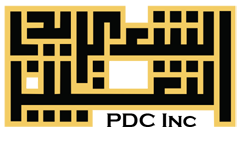
Thousands of photos offer evidence of murder by the Syrian government—but we’ve ignored them
In Jan. 2014, almost two years before harrowing images of people starving in Madaya, Syria shook the world’s conscience, tens of thousands of other horrifying images showed people allegedly tortured to death by the Syrian government’s mukhabarat, or security agency.
They were presented to the US Congress on July, 31, 2014 (warning: distressing images) and in the United Nations building in New York during the General Assembly in March 2015, as evidence of human rights abuses by the Assad regime, but little action has been taken otherwise. In an interview with Foreign Affairs, Syrian president Bashar al-Assad rejected any association with or responsibility for the deaths pictured as “allegations without evidence.”
Now, the results of a year-long investigation by Human Rights Watch (HRW) offer compelling evidence that the photos do show real victims of Syrian government detention centers and military hospitals. This follows a 2014 investigation by leading war crimes prosecutors that described the images as “clear evidence, capable of being believed by a tribunal of fact in a court of law, of systematic torture and killings of detained persons by the agents of the Syrian government.”
Smuggled through drives entrusted to the activist group Syrian National Movement, over 50,000 images were given to HRW. These images have been attributed to a former forensic photographer for the military police, nicknamed “Caesar,” who claims to have documented the bodies between May 2011 and August 2013. They are divided in two groups: photos of people labeled as shahid (martyrs), photographed with a written indication of their military ranks, and what appear to be victims of torture.
The latter group of images—over 28,000 of them, corresponding to nearly 7,000 people—show thin and horribly abused bodies, covered in bruises and wounds, lying naked on the ground. Their faces are disfigured beyond description.
In the Dec. 15 report titled “If the Dead Could Speak: Mass Deaths and Torture in Syria’s Detention Facilities,” forensic pathologists enlisted by Human Rights Watch to analyze the photos found “evidence of violent blunt force trauma, suffocation, starvation, and in one case due to a gunshot wound to the head.” The investigation used satellite imagery and landmark analysis to verify that the photographs were taken in military hospitals and detention centers in Damascus, as the photographer had declared.
HRW also conducted interviews with former detainees for the report, who allege that deaths in government detention centers were also caused by untreated diseases, severe gastrointestinal infections, and hunger strikes. Two defectors, a former conscript from one of the military hospital and a former nurse were interviewed as well, and confirmed brutalities like the ones pictured.
Nidal Bitari, a Syrian Palestinian journalist from Yarmuk refugee camp in Damascus, tells Quartz that he recognizes three of his friends among the bodies in the photos. “The pictures should have been kept hidden and used as evidence against the government of Bashar al-Assad in courts,” he says. “Not displayed in the United Nations hallway.”
In 2012, HRW verified the existence of at least 27 detention facilitiesrun by Syrian intelligence agencies.
“We know that it is far easier to walk rapidly down this corridor, far easier to look away,” said Michele Sison, US deputy representative to the UN, when the images were first shown in New York last year. “These images are the graphic depiction of how the Assad regime treats its citizens. It is imperative that we at the United Nations not look away.”
“The detention centres are death camps, where its detainees are starved and made subject to the most horrific acts of torture with the sole purpose being to ensure the maximum amount of suffering before their execution,” Toby Cadman, an international criminal lawyer with London-based 9 Bedford Row International, wrote in an email to Quartz.
“The victims are not members of any armed groups. They are civilians,” he continued. “They are men, women and children. They range from the very young to the elderly. […] They were targeted as anti-government demonstrators and those that opposed Bashar al-Assad’s brutal regime.”
But these pictures have failed to generate a strong reaction in the public, perhaps in part because the world’s eyes only really opened on Syria after ISIL’s rise as a media-savvy terror group, after the video of US journalist James Foley was shared in August 2014.
